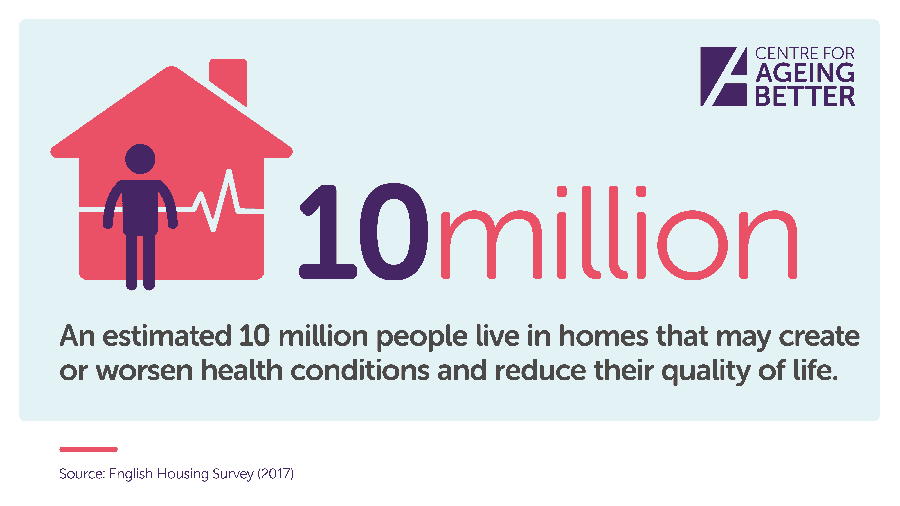Indecent homes crisis resurfaces as new figures show 10 million set to spend Christmas in unsuitable houses

An estimated 10 million people across England will spend this Christmas in a home classed as ‘non-decent’, according to new research by the Centre for Ageing Better and Care & Repair England.
Entitled ‘Centre for Ageing Better and Care & Repair England (2019), Non-decent homes and later life in England: Headline Statistics’, their findings show that 15 percent of all wheelchair users live in a non-decent home.
Additionally, the results show that there are 4.3 million non-decent homes in England, almost half of which are lived in by someone over the age of 55.
The most common reason for homes to be classed as non-decent is the presence of a serious hazard which poses a risk to the occupants’ health or safety, such as a fall hazard. According to the research, over a million over-55s are living in a home with at least one such problem.
The analysis also shows that the number of households over 75 in non-decent homes is rising, from an estimated 533,000 in 2012 to 701,000 in 2017. Households headed by someone aged 75 or over are disproportionately likely to be living in a non-decent home, with more than a fifth of these households living in a non-decent home.
This new data shows that a “staggering” £513 million is spent on first-year treatment costs alone for households headed by someone over 55 living in the poorest housing. Previous analysis suggests that the cost of poor housing to the NHS is £1.4 billion per annum.
The majority of housing in poor condition is owner-occupied, particularly among over-55s, with 78 percent of non-decent homes headed by someone in this age group being owner-occupied.
Many who were able to afford to buy houses as a result of changes to national housing policy and financial products in the 1970s and 80s are now in or reaching retirement, living on or anticipating limited pensions. As a result, they struggle to maintain or repair those homes, say the Centre for Ageing Better and Care & Repair England. Previous funding to address housing disrepair, such as means-tested grants for lower income homeowners, has been withdrawn in recent years.
The figures come ahead of a report due to launch early next year on the scale of non-decent housing for over-55s.

Anna Dixon, Chief Executive of Centre for Ageing Better, said: “These truly shocking figures should be a wake-up call to us all. In the twenty-first century, nobody should be living in a home that puts them at risk of a dangerous fall, or is so damp it gives them breathing problems. And yet today millions across the country are living in these appalling conditions.
“The progress made in improving the condition of our homes over the last fifty years has stalled – and in some cases even seems to be in reverse. Sadly, the number of households over 75 living in a non-decent home has risen since 2012.
“The cost to the NHS of poor housing is staggering – but the human cost is incalculable. Unless we start to see real leadership on this issue from government and the housing sector, millions more lives will be blighted by poor housing.”
All figures are from an analysis of 2017 English Housing Survey data by the Buildings Research Establishment, commissioned by the Centre for Ageing Better and Care & Repair England, from a report to be published in full in 2020.
Sue Adams, Chief Executive of Care & Repair England, added: “The prevalence of poor housing across England is shocking but it is not inevitable. Great improvements have been made to living conditions in the past and we must once again take action to tackle housing disrepair.
“A number of factors have led to the current situation, from the age of Britain’s housing stock – the oldest in Europe – to the number of people who became homeowners in the 1980s and 90s are now living on limited incomes without enough money to maintain and repair their homes.
“80% of the homes we will be living in by 2050 have already been built – so the condition of our existing housing stock is absolutely crucial in determining the health and quality of life for people of all ages.”

